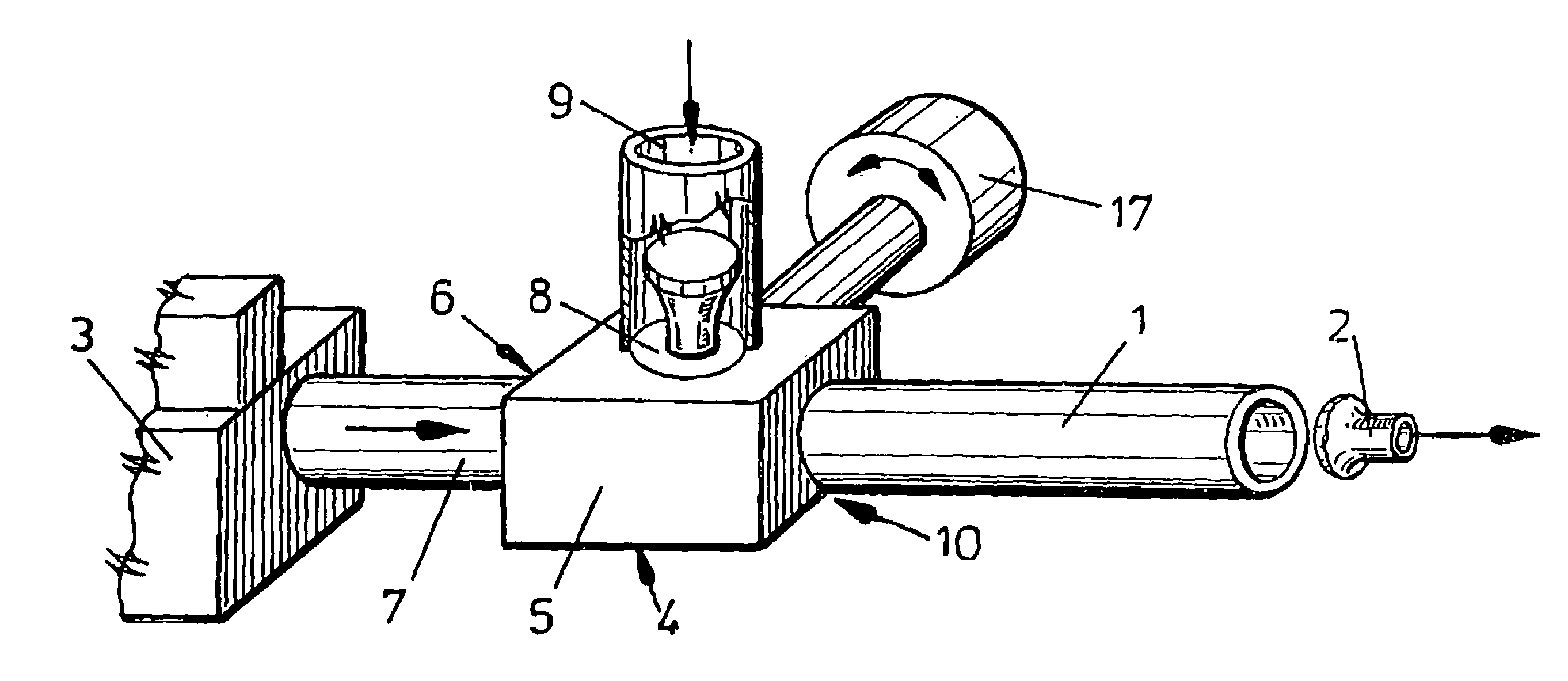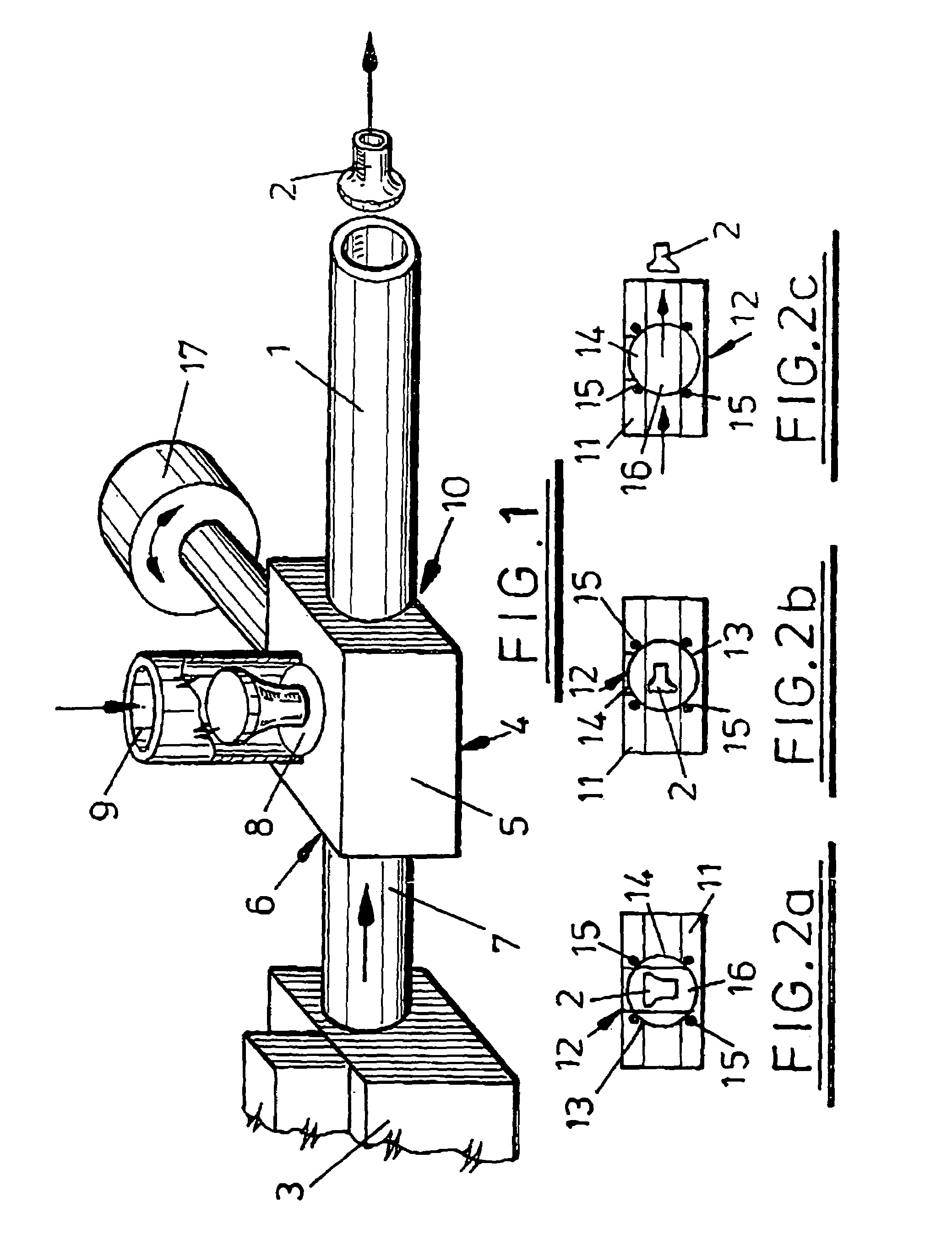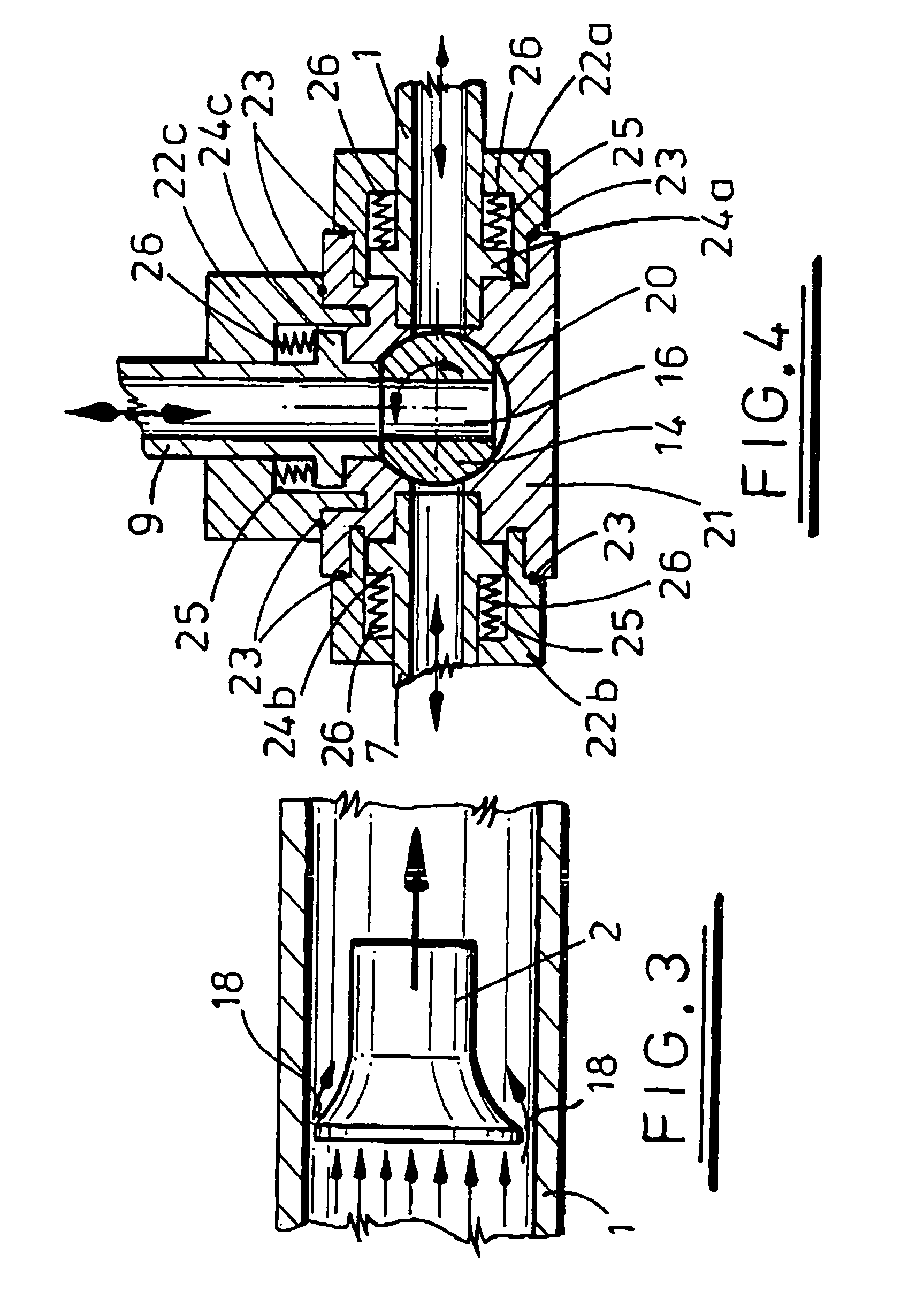Fastener delivery apparatus
a technology of fasteners and fasteners, which is applied in the direction of metal-working apparatuses, nailing tools, stapling tools, etc., can solve the problems of significant increase in tube wear, and fastener to jam in the tube, so as to reduce the friction between the fastener and the wall, reduce the tendency of fasteners to jam, and reduce the motive force
- Summary
- Abstract
- Description
- Claims
- Application Information
AI Technical Summary
Benefits of technology
Problems solved by technology
Method used
Image
Examples
Embodiment Construction
[0023]Referring now to the FIG. 1 of drawings, there is shown apparatus for transferring rivets from a central rivet supply to the nose of a rivet setting machine (neither of which are shown in the drawings).
[0024]The apparatus comprises a rivet delivery tube 1 in which rivets 2 are transported individually or in groups between the supply and the nose of the rivet setting machine, a compressed air supply 3 connected to one end of the delivery tube 1 and a rivet transfer gate assembly 4 disposed in close proximity to the compressed air supply 3. The transfer gate assembly 4 comprises a housing 5 with a first inlet aperture 6 connected to an outlet tube 7 of the compressed air supply 3, a second inlet aperture 8 connected to the end of a feeder tube 9 from the rivet supply and an outlet aperture 10 connected to the delivery tube 1.
[0025]The interior of the housing 11, shown in FIGS. 2a to 2c, has a tube portion interconnecting the delivery tube 1 and the outlet tube 7 of the compresse...
PUM
| Property | Measurement | Unit |
|---|---|---|
| Pressure | aaaaa | aaaaa |
| Pressure | aaaaa | aaaaa |
| Size | aaaaa | aaaaa |
Abstract
Description
Claims
Application Information
 Login to View More
Login to View More - R&D
- Intellectual Property
- Life Sciences
- Materials
- Tech Scout
- Unparalleled Data Quality
- Higher Quality Content
- 60% Fewer Hallucinations
Browse by: Latest US Patents, China's latest patents, Technical Efficacy Thesaurus, Application Domain, Technology Topic, Popular Technical Reports.
© 2025 PatSnap. All rights reserved.Legal|Privacy policy|Modern Slavery Act Transparency Statement|Sitemap|About US| Contact US: help@patsnap.com



